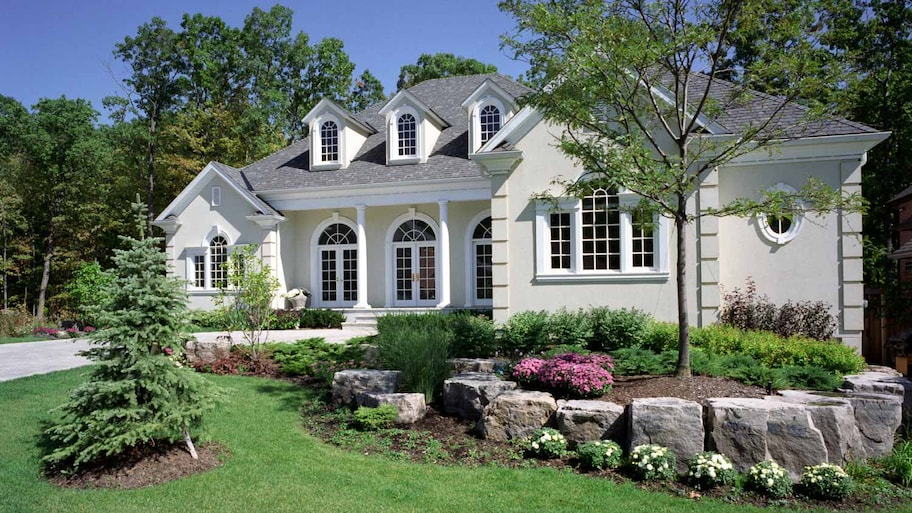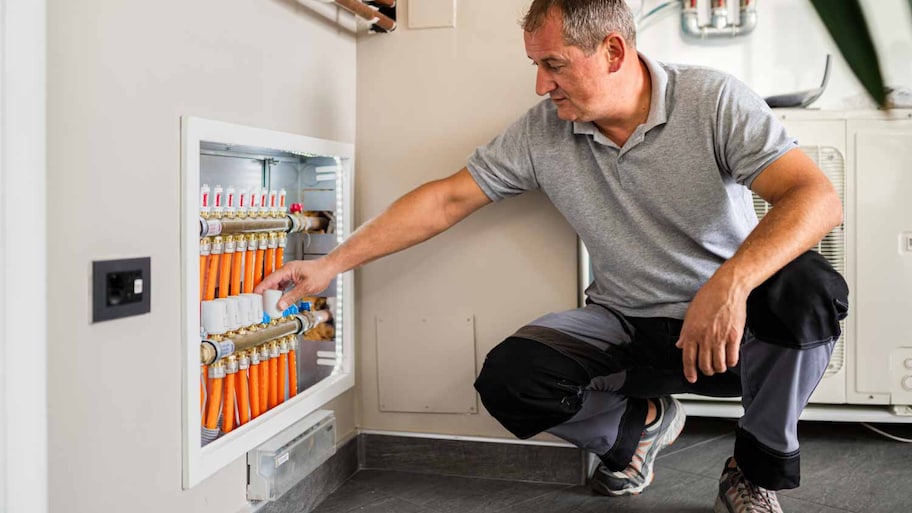What’s the Difference between Home Insurance and Home Warranty?
Keep yourself covered with home insurance and a home warranty


Highlights
Home insurance covers the structure of your home, your personal belongings, and liabilities, while home warranties cover your home’s systems and appliances.
Dangers like fire and theft are protected through homeowners insurance; however, home warranties protect against age and wear and tear.
Homeowners insurance is usually required by a mortgage lender, while home warranties are completely optional.
The average annual cost of homeowners insurance and home warranty are $1,500 and $1,049, respectively.
Many homeowners ask the question: home insurance or home warranty? Frankly, it’s not a debate of one or the other but of whether you need both. Home insurance and home warranties protect your home from emergencies and your bank account from spontaneous, wallet-breaking expenses. But should you pay for home insurance, home warranty, or both? Keep reading as we break down the differences between home insurance and home warranties so you know how to best protect your home.
What are the Differences Between Home Insurance and Home Warranties?
Home insurance covers your home, specifically, your home’s structure, while a home warranty covers your home’s systems and appliances. Both offer protection to your home and belongings, but as a whole, they’re different in their cost coverage, level of protection, requirement, and cost.
| Type of Difference | Home Insurance | Home Warranty |
|---|---|---|
| Coverage | Home’s structure | Systems / Appliances |
| Cost Coverage | Total or maximum pay | Discounted pay |
| Protection | Perils and liabilities | Age / Wear and tear |
| Requirement | Required by lender | Optional |
| Payment | Deductible | Service fee |
| Cost | Costs more | Costs less |
Homeowners Insurance vs. Home Warranty: Coverage Differences

Homeowners insurance and home warranties are distinct in the type of coverage they offer homeowners. Insurance covers the structure of your home, your personal belongings, and injuries or property damage. It may even cover living expenses at a four-star hotel if an emergency forces you out of your home. On the other hand, home warranties cover your major systems and appliances. This ranges from your HVAC and plumbing systems to your everyday household appliances like ovens, refrigerators, and washer/dryer units.
Cost Coverage Differences
When you get home insurance or a home warranty, what does it pay for? Home insurance pays for everything that’s covered in the policy. If you need to repair or replace your belongings, the cost is covered. Did your tree fall and damage your neighbor’s fence? It’s covered. Home insurance pays for injuries or damages caused by you, your property, or your family members, and that includes pets. All you’d need to do is file a homeowners insurance claim, and your insurer would send you a check for the amount covered. Depending on the policy, they may cover the total cost or they may cover the cost up to a maximum amount.
A home warranty doesn’t pay for everything, but it certainly helps. It helps you pay for repairing or replacing any applicable appliances or systems that are covered by your policy.
Protection Differences
Homeowners insurance and home warranties give you peace of mind. You know your house and belongings are protected, but what are they protected from?
A home warranty is fairly limited in what it protects your appliances from. It covers your systems and appliances from age or regular wear and tear. For example, if your refrigerator or dishwasher starts leaking because it’s old or outdated, your warranty will help you pay to repair or replace your appliances. Now, if a falling object were to damage your dishwasher or someone stole your refrigerator, a home warranty wouldn’t help you, but homeowners insurance would.
The level of protection you get from your homeowners' insurance depends on the policy. The most common type of homeowners insurance is the HO-3 policy, and it’s considered the standard. It covers your home structure against open perils and liabilities. An open-perils policy protects your home against any and all disasters unless your policy lists it as an exception. Your personal property, however, is covered on a named-perils basis. They’re only covered from a list of specific perils that are named in your policy.
HO-3 policies usually offer broad coverage against 16 named perils. They are:
Fire or lightning
Windstorm or hail
Explosion
Riot or civil commotion
Damage caused by aircraft
Damage caused by vehicles
Smoke
Vandalism
Theft
Volcanic eruption
Falling object
Weight of ice, snow, or sleet
Accidental water overflow or steam discharge
Sudden and accidental tearing apart, cracking, burning, or bulging of certain household systems
Freezing of systems or appliances
Sudden and accidental damage from electrical current
While your insurance policy may cover most of what you feel you need, some exclusions are typical of homeowners insurance. It won’t cover wear and tear, neglect, mold, pet or animal damage, or—much to the displeasure of many homeowners—floods. Homeowners insurance covers water damage that is “sudden and unexpected,” like that from a leaking pipe. So you’ll need to add special flood coverage if that’s a concern for you. If not, have your local water damage restoration professional on speed dial and hope you don’t have a flood.
Differences in Requirement
Having homeowners insurance isn’t a law, but depending on how you buy your home, you may be required to get it. If you apply for a loan to pay off your mortgage, your lender will likely require that you pay for a policy. This usually ends once you pay off the loan. Alternatively, a home warranty is completely optional.
Payment Differences
Deductibles and service fees are often used interchangeably, but they work differently in home insurance and warranties. Your home insurance policy will require that you pay a deductible—an out-of-pocket cost for each claim you file. The lower the deductible, the higher your monthly or annual premium, but deductibles tend to range between $500 to $2,000 or more.
The payment for home warranty claims can also be called deductibles, but they are more reminiscent of service fees. Each service call you make for one of your appliances or systems will typically include a service fee that will cost you around $75 to $125 per call.
Cost Differences
Because their coverage is different, you can expect differences in the cost of home insurance vs home warranties. On average, the cost of homeowners insurance is $1,500 a year, but this varies based on factors like where you live and the value of your home. Homeowners are paying slightly less for home warranties. On average, a home warranty costs $1,049 a year, but again, this can depend on your location and whether your plan covers your appliances, systems, or both.
Frequently Asked Questions
Everyone should buy homeowners insurance. It offers you, your home, and your family protection against unexpected peril or emergencies and saves you extensive out-of-pocket costs for repair and replacement. A home warranty is worth it for homeowners with appliances or systems that are nearing the end of their life span. If you’re the owner of a newly built home, you can skip a home warranty since new materials and workmanship often come with some type of warranty.
Insurance companies weigh the amount of potential liabilities on your property to increase (or decrease) the cost of your home insurance. They will use several factors to decide if there are more chances for peril or injury to take place at your home. These factors include your location (whether you live in an area with high risk for natural disasters), the age and condition of your home, and whether you have any “attractive nuisances”—features that both increase the aesthetic of your home and potential for injury—like a pool or treehouse.
